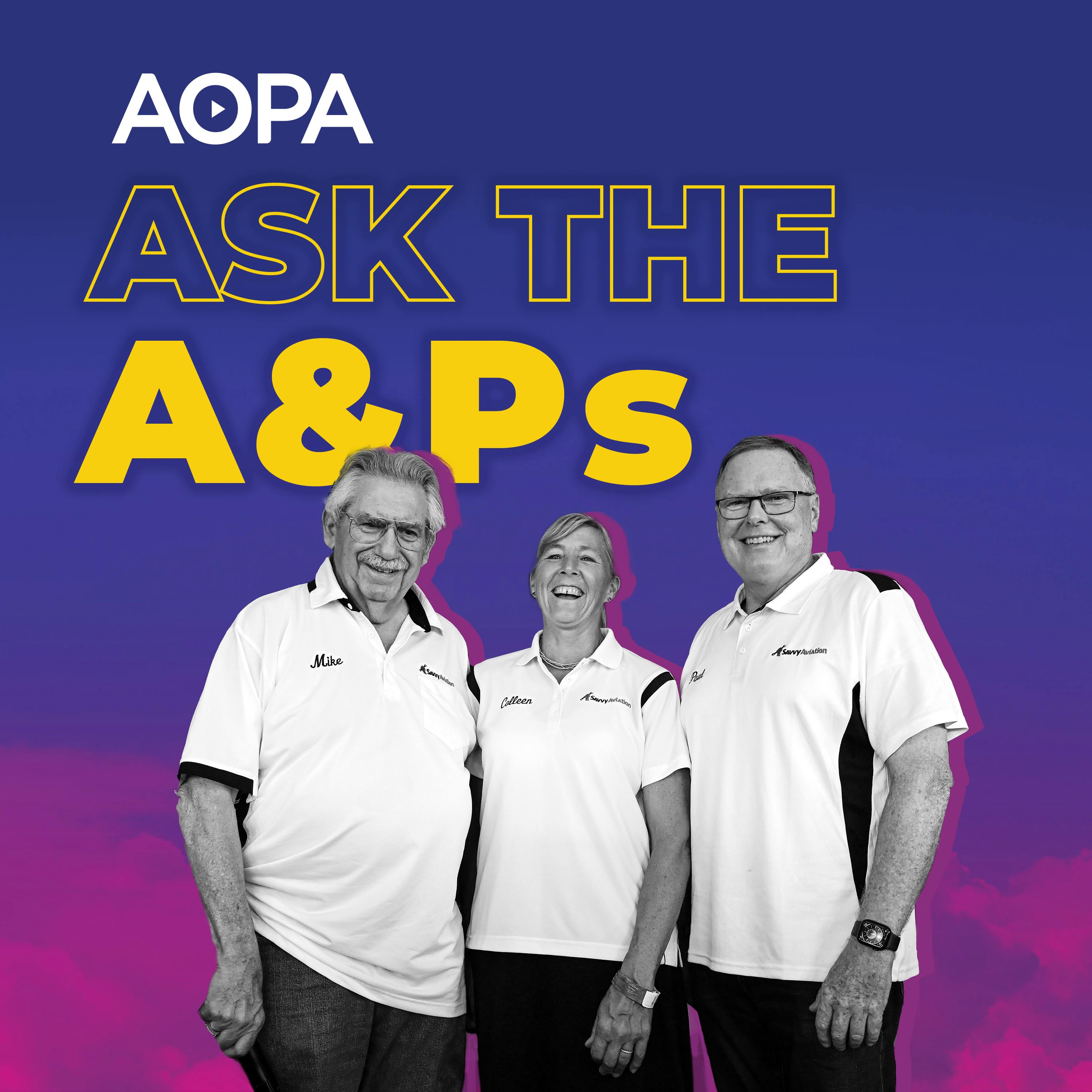"Your airplane may look like the molting hide of an animal"
Description
This month Mike, Paul, and Colleen tackle questions about inexpensively improving aircraft paint, cylinders that are too cool, low compression readings, and a magic floatplane that burns less fuel with its floats fitted. Plus, the ultimate stumper, an airplane that can't turn left. Submit your questions to [email protected]
Full notes below:
Eric has a Pitts with an unusual problem. When he turns left the engine starts to sputter, and when he turns right the rpm increases. They initially suspected the flop tube in the header tank. Although it looked to be in good shape they replaced it anyway. They also overhauled the wobble pump, and carefully inspected all the fuel lines. There were no obvious problems. Colleen reached out to Pitts experts. They suggested making sure the fuel divider was properly bled. Eric is pretty sure it’s not vapor lock. “It has to be the flop tube,” Mike and Colleen say. Another theory Eric and his mechanics came up with is the fuel controller. They sent it for service, and the shop found that the throttle body mounting hole had a little rounding from vibration damage. They thought that maybe turning opened it to allow in more air, leaning the mixture. Once he gets it back, Eric is planning to do a test flight.
Doug is looking at his paint job, and while he knows that paint is an important protector, he’s trying to avoid a costly and invasive full repaint. Paul said you can absolutely go in and touch it up yourself. You can use a touch-up brush, sprayer, or anything you like. Colleen said that the vast majority of the work is in prep, and that the paint color will never match because the original paint will have faded. “Be careful and measured,” she said. Mike said to make sure the aluminum is clean and corrosion-free prior to applying the paint. Paul suggests Scotch Brite and Alumiprep (https://www.aircraftspruce.com/catalog/cspages/alumiprep.php) and Alodine (https://www.aircraftspruce.com/catalog/cspages/alodine1201.php) to make the primer stick. Get an automotive paint person to help blend the colors, he said. And Mike says to make sure you don’t sand through the thin layer of Alclad.
Andy wonders if his IO-540 is running too cool. His cylinder head temperatures only top out at 310 degrees, which he's reading on an Electronics International engine monitor. Mike said EI makes two probes for their engine monitors, and the P-100 always reads low because there’s an air gap at the cylinder head probe that makes it artificially low. The only downside of running too cool is potential lead scavenging. Mike said to pull the spark plug and use a borescope to look at the exhaust valve stem. If there isn’t deposit build-up, then there’s nothing to worry about. But lots of lead means you have to somehow increase the temperature.
Tom is worried about his compression readings. His O-320-D2G had a cylinder of 38/80 only 18 hours after overhaul. Two more cylinders are reading a little low now at 100 hours. He thinks all of them are leaking a bit, and have gotten slightly worse. He expects them to get to the low 60s, and he’s worried that when he wants to sell, buyers will baulk at the numbers. So he’s wondering if he should just replace the cylinders now so he never has to worry about it. The hosts all agree he is overanalyzing and should monitor as normal, keep flying, and work on the cylinders only when it’s required.
Jeff has a Cessna 180 floatplane and a new fuel flow meter has him thinking. He’s wondering if the performance charts are based on tach time or clock time. Paul assumes that because the tach was the only instrument they had when they certified the airplane, it has to be tach based. “They had clocks when that airplane was built,” Colleen says. She and Mike are sure it’s clock time. Jeff also wonders why his float supplement shows fuel flow lower than the original handbook. With a difference of only .2 gallons per hour, Mike says they are effectively the same n
More Episodes
Published 11/15/24
Lean of peak is causing odd vibrations in a Commander, and the hosts discuss proper troubleshooting. Plus carb heat on the ground, dehydrators, and parts no longer manufactured. Email [email protected] for a chance to get on the show.
Full notes below.
Chip said his mechanic is concerned about...
Published 11/01/24
Rough idle, electronic ignition basics, airplanes to avoid (or not), and the difference between detonation and pre-ignition are on tap for this episode. Email us at [email protected] for a chance to get on the show.
Join the world's largest aviation community at aopa.org/join
Full notes...
Published 10/15/24


